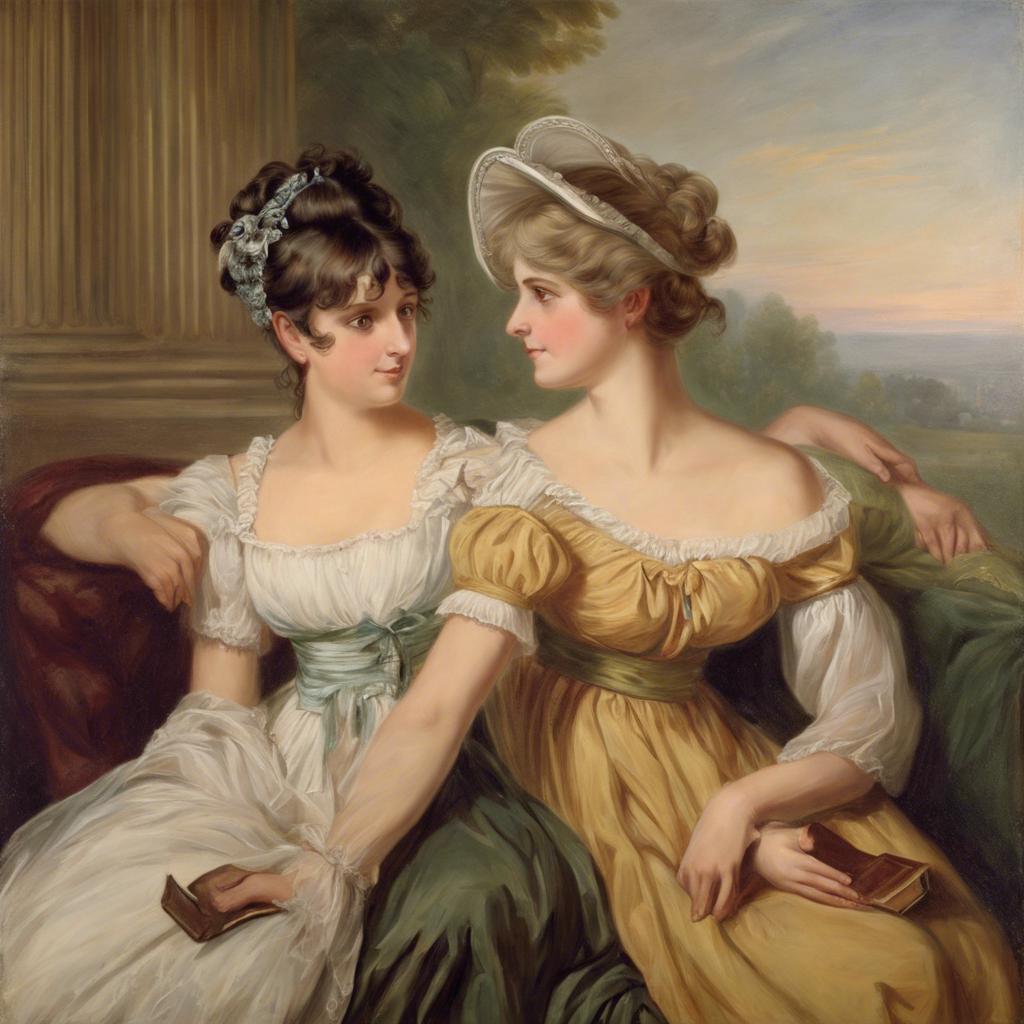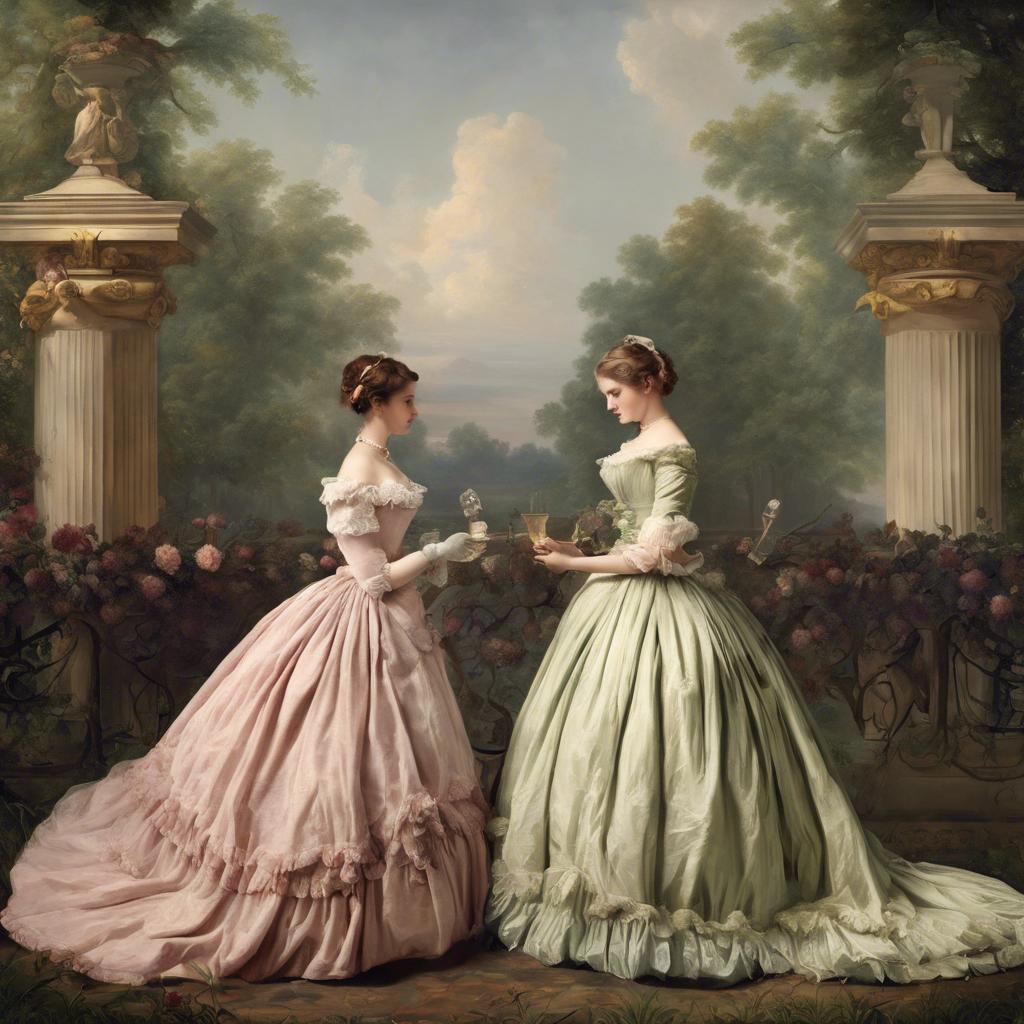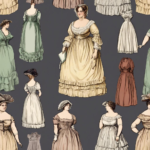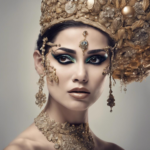In the annals of history, the Regency Era and the Romantic Era stand out as two defining periods in the evolution of Western culture and society. Characterized by distinct ideologies, social structures, and artistic movements, these eras represent not only a shift in political power and governance, but also a profound transformation in the way individuals viewed themselves and their place in the world. Examining the contrasting features of the Regency and Romantic Eras provides insight into the complexities of human experience during times of great change and upheaval. This article seeks to explore the key differences between these two significant periods in history, shedding light on the unique characteristics that define each era and the lasting impact they have had on the course of history.
Step Into the World of Cheryl Bolen
Dive into the enchanting stories of love, intrigue, and elegance set in the Regency Era. Cheryl Bolen's novels offer timeless romance and captivating tales that will leave you wanting more.
Explore Cheryl Bolen's Books Now
Comparing Regency Era with Romantic Era
In terms of fashion, the Regency Era was characterized by simple, elegant designs and high-waisted silhouettes, while the Romantic Era featured more dramatic, flowing styles with an emphasis on nature-inspired motifs. **Regency Era**: High-waisted dresses, regency era in america”>empire waistlines, minimalistic designs. **Romantic Era**: Flowing skirts, loose-fitting bodices, floral patterns.
When it comes to literature, the Regency Era produced iconic works such as Jane Austen’s novels, known for their wit and social commentary. On the other hand, the Romantic Era gave us epic poems like Lord Byron’s “Childe Harold’s Pilgrimage” and the lyrical ballads of William Wordsworth and Samuel Taylor Coleridge. **Regency Era**: Focus on social norms and relationships. **Romantic Era**: Emphasis on individual emotion and nature.
| Aspect | Regency Era | Romantic Era |
|---|---|---|
| Architecture | Neoclassical, symmetry | Gothic revival, nature motifs |
| Art | Portraiture, refined elegance | Landscapes, emotional expression |
while the Regency Era was marked by refined elegance and societal norms, the Romantic Era was characterized by emotional expression and a deeper connection to nature. Both periods have left a lasting impact on our cultural heritage, shaping the way we view art, literature, and fashion to this day.
Societal Norms and Conventions
In the Regency era, were heavily influenced by strict rules of etiquette and class distinctions. The upper classes held power and wealth, with elaborate social gatherings and formal courtship rituals being the norm. Women were expected to be demure and obedient, while men were expected to be chivalrous and honorable. Marriage was often seen as a social contract, with little emphasis on love or personal choice.
On the other hand, the Romantic era brought about a shift in . The emphasis was now placed on individualism, emotion, and personal expression. Romanticism celebrated nature, passion, and creativity, with a focus on personal freedom and self-discovery. Relationships were now based on mutual affection and emotional connection, rather than social status or financial gain.
the transition from the Regency era to the Romantic era marked a significant change in . While the Regency era was characterized by strict social hierarchies and traditional values, the Romantic era embraced a more free-spirited and emotionally driven approach to life and relationships. The contrast between these two periods provides a fascinating insight into the evolution of social customs and attitudes throughout history.
Literary and Artistic Movements
The Regency Era and the Romantic Era were two distinct periods in that had a significant impact on the cultural landscape of the time. While both eras were defined by a sense of rebellion against traditional norms, they each had their own unique characteristics.
In the Regency Era, which spanned from 1811 to 1820, there was a strong focus on elegance, refinement, and social order. This era was marked by the rule of King George IV in England and was characterized by a sense of sophistication and indulgence. Writers and artists of the Regency Era often depicted themes of love, social hierarchy, and societal norms in their works.
On the other hand, the Romantic Era, which followed the Regency Era, was a period of intense emotion, imagination, and individualism. Spanning from the late 18th century to the mid-19th century, the Romantic Era was a time of revolution and political upheaval. Writers and artists of this era sought to break free from the constraints of society and explore themes of nature, emotion, and the supernatural in their works.
while the Regency Era and the Romantic Era shared some similarities in their rejection of tradition, they differed in their focus and themes. The Regency Era was characterized by elegance and social order, while the Romantic Era was marked by passion and individualism. Despite their differences, both eras left a lasting impact on the of their time.
| Regency Era | Romantic Era |
|---|---|
| Focus on elegance and refinement | Emphasis on intense emotion and imagination |
| Social order and sophistication | Individualism and rebellion against societal norms |
| Themes of love and societal hierarchy | Exploration of nature, emotion, and the supernatural |
Recommendations for Further Study
The Regency Era and the Romantic Era are two distinct periods in history that have left a lasting impact on literature, fashion, and culture. For those interested in delving deeper into the differences between these two fascinating eras, here are some :
1. Literature:
- Read works from prominent authors of each era such as Jane Austen for the Regency Era and Lord Byron for the Romantic Era.
- Compare and contrast the themes, styles, and societal influences present in the literature of both eras.
- Explore how historical events shaped the writing of the time, from the Napoleonic Wars in the Regency Era to the Industrial Revolution in the Romantic Era.
2. Fashion:
- Examine the clothing and accessories worn during the Regency Era, characterized by elegant simplicity and Empire silhouettes.
- Explore the elaborate and extravagant fashions of the Romantic Era, featuring billowing sleeves, corsets, and intricate embroidery.
- Study how fashion reflected the values and ideals of each era, from the restrained elegance of the Regency to the romanticism and nostalgia of the Romantic period.
| Regency Era | Romantic Era |
|---|---|
| Empire silhouettes | Billowing sleeves |
| Elegant simplicity | Corsets |
| Napoleonic Wars | Industrial Revolution |
3. Art and Culture:
- Explore the paintings, music, and architecture of each era to gain a deeper understanding of the artistic movements that defined them.
- Compare the neoclassical influences in Regency art to the emotional and nature-inspired themes of Romantic art.
- Study the cultural shifts that took place during these periods, from the rise of the British Empire in the Regency Era to the rise of individualism and emotional expression in the Romantic Era.
To Conclude
while both the Regency Era and the Romantic Era hold significant importance in shaping the cultural landscape of the early 19th century, they each offer unique perspectives on love, literature, and societal norms. The Regency Era’s focus on elegance and refinement contrast with the Romantic Era’s celebration of nature, individualism, and emotion. Both eras have left indelible marks on history and continue to influence art, literature, and culture to this day. As we reflect on the distinct characteristics of these two eras, we are reminded of the rich complexity of the human experience and the enduring impact of historical movements on our world.


